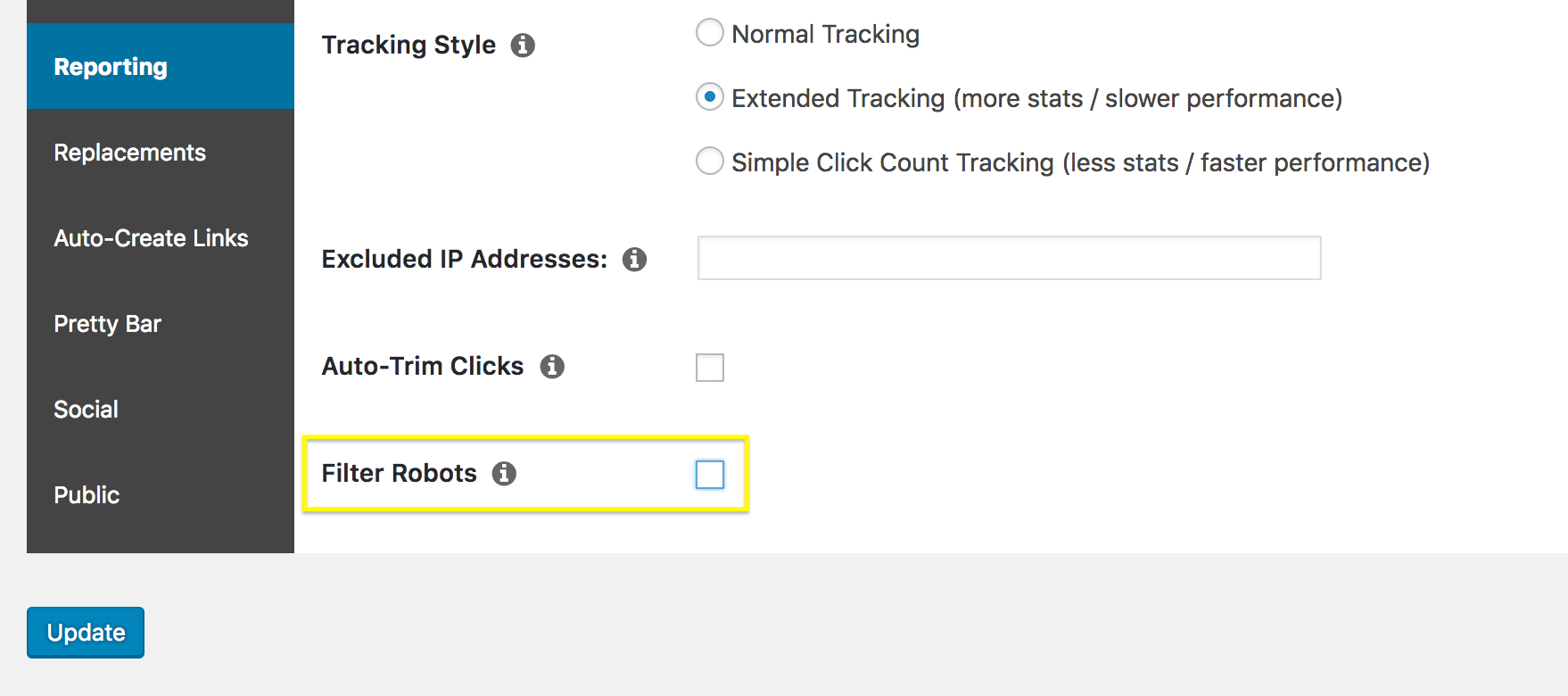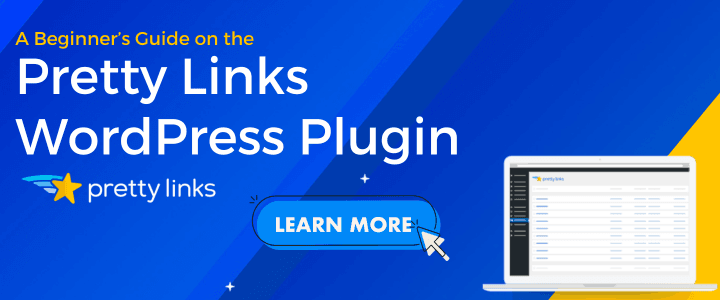Conteúdo
Among its many features, the PrettyLinks plugin offers powerful tools to track and analyze your links. The reports it generates are invaluable for assessing link performance and monitoring conversions. However, to gain even more precise insights, you can optimize your PrettyLinks reports. While the default settings offer useful data, tailoring your reports will provide more accurate, actionable results, helping you better understand your links’ performance.
Neste artigo, mostraremos três maneiras pelas quais você pode PrettyLinks link tracking ainda mais eficaz. Vamos começar!
Uma breve introdução aos relatórios de links
One vital element of any link campaign is tracking your results to create what’s known as a relatório de links. Esse relatório fornece informações valiosas sobre o desempenho dos seus links. Ele não apenas permite que você veja a frequência com que seus links são clicados on, it also gives you insight into your users’ behavior.
Por sua vez, você pode usar essas informações para otimizar seus links e campanhas futuras. Por exemplo, você pode perceber que um link é clicado com mais frequência quando colocados em um único local do que em outro. Você também pode determinar quais textos-âncora são mais eficazes e até mesmo ver quantas conversões cada link gera.
3 Ways to Optimize Your PrettyLinks Reports
Embora os relatórios padrão oferecidos pela PrettyLinks é suficiente para lhe oferecer muitos dados úteis, há são ways you can make it even more effective. Let’s take a look at a few of these methods now!
1. Use o rastreamento estendido
The link tracking provided by PrettyLinks is actually split into three different types of tracking functionality. This lets you choose the level of complexity you want to use for your statistics. In fact, if you want to see only the most basic information, such as the number of clicks on each link, you can do that.
However, we’re guessing that this isn’t what you’re after. To get the most out of your statistics, you’ll need to access your site’s admin dashboard and navigate to PrettyLinks > Opçõese, em seguida, selecione a opção Relatórios guia:

Por padrão, esse recurso é definido como Rastreamento normal, which provides you with a lot of information about each link, when it’s clicked on, and by whom:

Se quiser obter ainda mais detalhes, no entanto, você pode ativar Rastreamento estendido:

Once you’ve done that, you’ll get access to far more in-depth results for each of your links. If you access PrettyLinks > PrettyLinks and select the statistics for a specific link, you’ll see that you now have much more information at hand:

You can use this new data to get an even clearer idea of who clicks on your links, when and where they’re doing so, and what devices they’re using.
2. Filtre os robôs de seus resultados
Another way you can optimize your PrettyLinks reports is by cutting out false positives. For example, most sites are regularly visited by “robots” or bots, which are automated programs that navigate through pages looking for specific information. For example, O Google usa um bot para indexar sites, para que eles possam aparecer em seus resultados de pesquisa.
However, these robots aren’t exactly your target audience, and they can create misleading clicks that clog up your reports. To avoid this, PrettyLinks lets you filter out bots from your results. To do that, you’ll simply need to visit the Relatórios guia em PrettyLinks > Opções mais uma vez:

The setting you’re looking for now is Filtrar robôs. When you select this checkbox, clicks created by bots will no longer be included in your link reports. You’ll also notice that another field appears right below:

This is actually a very helpful option, which we’ll look at more closely in the next section.
3. Excluir e incluir endereços IP específicos
While PrettyLinks’ automated filtering is a tremendously helpful feature, you might also want to tweak exactly which users you want to be included in your link reports. To accomplish this, you can blacklist and whitelist specific IP addresses.
Essa é uma função avançada que permite identificar endereços (ou intervalos) específicos que você deseja sempre excluir ou incluir em seus relatórios. Por exemplo, se quiser garantir que um determinado intervalo de IPs seja incluído em seus relatórios, mesmo que o tráfego seja sinalizado como proveniente de bots, você pode inseri-lo no campo Endereços IP da lista de permissões que mostramos a você acima.
Você também pode fazer o contrário se quiser que um determinado IP ou intervalo de endereços nunca seja incluído nos resultados. Por exemplo, talvez você queira excluir visitas de seu próprio computador ou rede. Para isso, basta adicionar esses endereços no campo Endereços IP excluídos campo:

Se quiser descobrir facilmente seu próprio endereço IP, você pode clicar no botão i ao lado desse campo:

Once you’ve added addresses to your blacklist, they’ll no longer be represented in your link reports. This gives you a great deal of control over your results, since you can ensure that only valid and useful data is included.
Conclusão
Os relatórios de links são um recurso extremamente útil em PrettyLinks. Not only do they help you keep track of your links, but they can even assist you in growing your conversions through better optimization. However, in order to get the most out of the results, you’ll want to optimize your PrettyLinks reports.
Neste artigo, mostramos três maneiras de fazer exatamente isso. São elas:
- Use o rastreamento estendido.
- Filtre os robôs de seus resultados.
- Excluir e incluir endereços IP específicos.
Do you have any questions about optimizing your link reports in PrettyLinks? Let us know in the comments section below!







Deixe um comentário